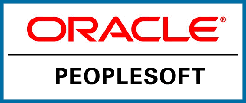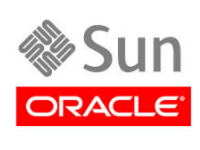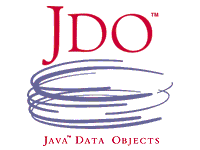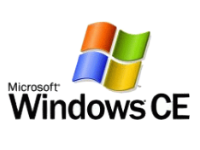Internationalization
Internationalization and Globalization
In computing, internationalization and localization are means of adapting computer software to different languages and regional differences. Internationalization is the process of designing a software application so that it can be adapted to various languages and regions without engineering changes. Localization is the process of adapting software for a specific region or language by adding locale-specific components and translating text. Due to their length, the terms are frequently abbreviated to the numeronyms i18n, where 18 stands for the number of letters between the i and the n in
Internationalization :
The capital L on l10n helps to distinguish it from the l and N in Localization.
Language Localisation :
Language localisation is the process of translating a product into different languages or adapting a language for a specific country or region. This article focuses on the latter. Many languages, especially world languages with a large number of native speakers, have spread geographically and are nowadays used in many countries and regions. Thus, different national varieties of these languages have evolved. Linguistic differences include pronunciation, spelling conventions and grammatical patterns. It is important for companies to take such differences into account, for example, when creating websites for specific regional markets.
English Language Localisation :
The two largest countries (in population) where English is spoken natively are the United States and the United Kingdom. There are numerous differences between American English and British English-spelling conventions (color, center, program, localization vs colour, centre, programme, localisation), pronunciation, words with different meanings, vocabulary and slightly different grammar patterns particularly in the use of tenses. Localisation in this context usually refers to creating country-specific websites or publishing different editions of a book.
Focal points of internationalization and localization efforts include :
Language :
- Computer-encoded text
- Different systems of numerals
- Writing direction which is e.g. left to right in German, right to left in Persian, Hebrew and Arabic
- Spelling variants for different countries where the same language is spoken, e.g. localization (en-US, en-CA, en-GB-oed) vs. localisation (en-GB, en-AU)
- Text processing differences, such as the concept of capitalization which exists in some scripts and not in others, different text sorting rules, etc
- Graphical representations of text (printed materials, online images containing text) Spoken (Audio)
- Subtitling of film and video
.
- Culture :
-
Culture :
- Images and colors: issues of comprehensibility and cultural appropriateness Names and titles
- Government assigned numbers (such as the Social Security number in the US, National Insurance number in the UK, Isikukood in Estonia) and passports
- Currency (symbols, positions of currency markers)
- Weights and Measures
- Paper Sizes
- Writing Conventions :
-
Writing Conventions :
- Date/time format, including use of different calendars
- Time zones (UTC in internationalized environments)
- Formatting of numbers (decimal points, positioning of separators, character used as separator)
- Any other aspect of the product or service that is subject to regulatory compliance
.The distinction between internationalization and localization is subtle but important. Internationalization is the adaptation of products for potential use virtually everywhere, while localization is the addition of special features for use in a specific locale. Internationalization is done once per product, while localization is done once for each combination of product and locale. The processes are complementary, and must be combined to lead to the objective of a system that works globally, Subjects unique to localization also include.
Language Translation :
- National varieties of languages
- Special support for certain languages such as East Asian languages
- Local Customs
- Local Content
- Symbols
- Order of sorting
- Aesthetics
- Cultural values and social context
- Business process for internationalizing software :
-
Business process for internationalizing software
In order to internationalize a product, it is important to look at a variety of markets that your product will foreseeably enter. Details such as field length for street addresses, unique format for the address, ability to make the zip code field optional to address countries that do not have zip codes, plus the introduction of new registration flows that adhere to local laws are just some of the examples that make internationalization a complex project.
A broader approach takes into account cultural factors regarding for example the adaptation of the business process logic or the inclusion of individual cultural (behavioral) aspects.
- Coding practice :
-
Coding practice
The current prevailing practice is for applications to place text in resource strings which are loaded during program execution as needed. These strings, stored in resource files, are relatively easy to translate. Programs are often built to reference resource libraries depending on the selected locale data. One software library that aids this is gettext. No prior internationalization need be in place.
Thus to get an application to support multiple languages one would design the application to select the relevant language resource file at runtime. Resource files are translated to the required languages. This method tends to be application-specific and, at best, vendor-specific. The code required to manage date entry verification and many other locale-sensitive data types also must support differing locale requirements. Modern development systems and operating systems include sophisticated libraries for international support of these types.
- Difficulties :
-
Difficulties
While translating existing text to other languages may seem easy, it is more difficult to maintain the parallel versions of texts throughout the life of the product. For instance, if a message displayed to the user is modified, all of the translated versions must be changed. This in turn results in a somewhat longer development cycle. Many localization issues (e.g. writing direction, text sorting) require more profound changes in the software than text translation. For example, OpenOffice.Org achieves this with compilation switches.
To some degree (e.g. for Quality assurance), the development team needs someone who understands foreign languages and cultures and has a technical background. In large societies with one dominant language/culture, it may be difficult to find such a person.
One example of the pitfalls of localization is the attempt made by Microsoft to keep some keyboard shortcuts significant in local languages. This has resulted in some (but not all) programs in the Italian version of Microsoft Office using "CTRL + S" (sottolineato) as a replacement for "CTRL + U" (underline), rather than the (almost) universal "Save" function.
- Costs and benefits :
-
Costs and benefits
In a commercial setting, the benefit from localization is access to more markets. However, there are considerable costs involved, which go far beyond just engineering. First, software must generally be re-engineered to make it world-ready.
Then, providing a localization package for a given language is in itself a non-trivial undertaking, requiring specialized technical writers to construct a culturally appropriate syntax for potentially complicated concepts, coupled with engineering resources to deploy and test the localization elements. Further, business operations must adapt to manage the production, storage and distribution of multiple discrete localized products, which are often being sold in completely different currencies, regulatory environments and tax regimes.
Finally, sales, marketing and technical support must also facilitate their own operations in the new languages, in order to support customers for the localized products. Particularly for relatively small language populations, it may thus never be economically viable to offer a localized product. Even where large language populations could justify localization for a given product, and a product's internal structure already permits localization, a given software developer/publisher may lack the size and sophistication to manage the ancillary functions associated with operating in multiple locales. For example, Microsoft Windows 7 has 96 language packs available.
One alternative, most often used by open source software communities, is self-localization by teams of end-users and volunteers. The KDE3 project, for example, has been translated into over 100 languages, and KDE4 is available in 68. However, self-localization requires that the underlying product first be engineered to support such activities, which is a non-trivial endeavor.
Quality Service
Intelligent Quotes
A solid working knowledge of productivity software and other IT tools has become a basic foundation for success in virtually any career. Beyond that, however, I don't think you can overemphasise the importance of having a good background in maths and science.....
Founder , Microsoft Solutions
"Every software system needs to have a simple yet powerful organizational philosophy (think of it as the software equivalent of a sound bite that describes the system's architecture)... A step in thr development process is to articulate this architectural framework, so that we might have a stable foundation upon which to evolve the system's function points. "
"All architecture is design but not all design is architecture. Architecture represents the significant design decisions that shape a system, where significant is measured by cost of change"
"The ultimate measurement is effectiveness, not efficiency "
Accountability in Human Resource Management.
"It is argued that software architecture is an effective tool to cut development cost and time and to increase the quality of a system. "Architecture-centric methods and agile approaches." Agile Processes in Software Engineering and Extreme Programming.
& Springer Berlin Heidelberg, 2008
"Java is C++ without the guns, knives, and clubs "
Cited in: David Parsons (2001) Object Oriented Programming with C++.
"When done well, software is invisible"
"Our words are built on the objects of our experience. They have acquired their effectiveness by adapting themselves to the occurrences of our everyday world."
Atoms of silence.
"I always knew that one day Smalltalk would replace Java. I just didn't know it would be called Ruby. "
Giles Bowkett (2007)
"The best way to predict the future is to invent it."
At a 1971 meeting of PARC
"In 30 years Lisp will likely be ahead of C++/Java (but behind something else)"
"Possibly the only real object-oriented system in working order. (About Internet)"
"Simple things should be simple, complex things should be possible. "
The Wiki Way: Quick Collaboration on the Web
"Software engineering is the establishment and use of sound engineering principles in order to obtain economically software that is reliable and works efficiently on real machines."
"Model Driven Architecture is a style of enterprise application development and integration, based on using automated tools to build system independent models and transform them into efficient implementations. "
"The Internet was done so well that most people think of it as a natural resource like the Pacific Ocean, rather than something that was man-made. When was the last time a technology with a scale like that was so error-free? The Web, in comparison, is a joke. The Web was done by amateurs. "
2012
"Software Engineering Economics is an invaluable guide to determining software costs, applying the fundamental concepts of microeconomics to software engineering, and utilizing economic analysis in software engineering decision making. "
Software engineering economics. Abstract.
"Ultimately, discovery and invention are both problems of classification, and classification is fundamentally a problem of finding sameness. When we classify, we seek to group things that have a common structure or exhibit a common behavior. "
"Perhaps the greatest strength of an object-oriented approach to development is that it offers a mechanism that captures a model of the real world. "
Software Engineering with Ada
"The entire history of software engineering is that of the rise in levels of abstraction. "
In his talk "The Limits of Software.
"The amateur software engineer is always in search of magic, some sensational method or tool whose application promises to render software development trivial. It is the mark of the professional software engineer to know that no such panacea exist "
-Robert A. Maksimchuk.
Core Values ?

Agile software development is a group of software development methods based on iterative and incremental development, where requirements and solutions evolve through collaboration.....
moreCore Values ?

Total Quality Management / TQM is an integrative philosophy of management for continuously improving the quality of products and processes. TQM is based on the premise that the quality of products and .....
moreCore Values ?

We are more than code junkies. We're a company that cares how a product works and what it says to its users. There is no reason why your custom software should be difficult to understand.....
moreCore Values ?

With extensive software development experience, our development team is up for any challenge within the Great Plains development environment. our Research works on IEEE international papers are consider....
moreCore Values ?

We have a proven track record of developing and delivering solutions that have resulted in reduced costs, time savings, and increased efficiency. Our clients are very much ....
moreCore Values ?

We simply dont release anything that isnt tested well. Tell us something cant be tested under automation, and we will go prove it can be. We create tests before we write the complementary production software......
moreCore Values ?

If a customer needs technical support for one of our products, no-one can do it better than us. Our offices are open from 9am until 9pm Monday to Friday, and soon to be 24hours. Unlike many companies, you are able to....
moreCore Values ?

We have a reputation for process genius, fanatical testing, high quality, and software joy. Whatever your business, our methods will work well in your field. We have done work in Erp Solutions ,e-commerce, Portal Solutions,IEEE Research....
more
Why Choose Us ?

The intellectual commitment of our development team is central to the leonsoft ability to achieve its mission: to develop principled, innovative thought leaders in global communities.
Read More
Today's most successful enterprise applications were once nothing more than an idea in someone's head. While many of these applications are planned and budgeted from the beginning.
Read More
We constantly strive to redefine the standard of excellence in everything we do. We encourage both individuals and teams to constantly strive for developing innovative technologies....
Read More
If our customers are the foundation of our business, then integrity is the cornerstone. Everything we do is guided by what is right. We live by the highest ethical standards.....
Read More

















































